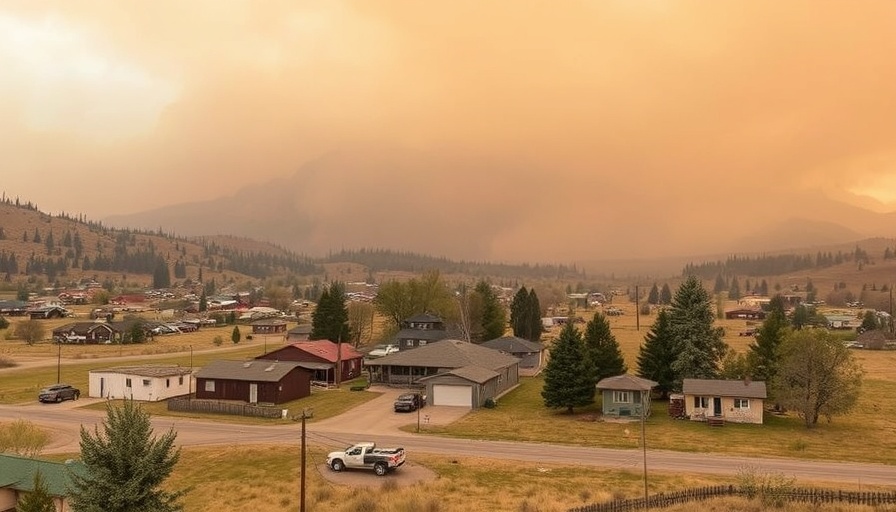
Chinook Salmon's Triumphant Return: A Sign of Hope for California’s Ecosystems
For the first time in nearly a century, adult winter-run Chinook salmon have been spotted in California’s McCloud River, an extraordinary sight captured by the California Department of Fish and Wildlife (CDFW). This landmark event marks not only a triumph for the species—declared endangered by NOAA—but also a beacon of hope for restoration efforts all across the state. The captured footage showing a female Chinook safeguarding her nest of eggs resonates deeply, embodying resilience in nature.
Understanding the Threat: The Endangered Status of Winter-Run Chinook
The winter-run Chinook salmon holds the distressing title of being among the “most at risk of extinction in the near term.” The threats they face are numerous, from habitat loss due to dam construction to volatile water temperatures that hinder reproduction. Activists like Rebekah Olstad, salmon restoration project manager for the Winnemem Wintu Tribe, emphasize that while the introduction of hatchery-raised salmon has helped maintain some population, the larger goal remains the full restoration of wild, self-sustaining salmon. “It’s not just about survival; it's about thriving,” Olstad asserts.
A Journey to Restoration: Cultural and Ecological Significance
For the Winnemem Wintu tribe, the Chinook salmon is more than a fish; it holds cultural, spiritual, and ecological significance. With plans to construct a volitional passage to allow salmon a full life cycle from ocean to stream, the tribe is actively working to restore not just the species but also their connection to the land and waters that shaped their identity. “Salmon are a keystone species,” says tribal member Michael Preston. “Their return signals health for our entire ecosystem.”
Reconnecting with Ancestral Roots: The Global Salmon Odyssey
Wild salmon that once swam in California's rivers were believed lost forever until their lineage was discovered thriving in the mountainous rivers of New Zealand. This unexpected twist highlights a fascinating aspect of conservation—the possibility for hybrid vitality through ancestral genetics. The call for these salmon's return isn't just ecological; it’s a rallying cry to reclaim a piece of history that embodies the tribe’s creation stories and prophecies.
The Bigger Picture: Ecosystem Restoration Across the West
The challenges of salmon restoration extend beyond the McCloud River or the Winnemem Wintu Tribe. Across the western United States and Canada, similar efforts are being undertaken to facilitate the return of salmon populations to their indigenous habitats. Each initiative not only aims to revive the fish but also seeks to heal the ecosystems that nurture them, advocating for a harmonious existence between nature and human endeavors.
Hope for Tomorrow: What This Means for Homebuyers and Conservationists
For homebuyers, sellers, and property investors in regions like Dumfries, this story of the Chinook salmon provides an important lesson in sustainability. As ecosystems flourish, local economies thrive. Nature’s resilience could influence property values and investment opportunities in these areas once connected with the salmon's habitat. Investing in eco-friendly homes and supporting conservation efforts can lead to sustainable prosperity.
As we reflect upon the astonishing return of the winter-run Chinook salmon, let it serve as an inspiration and a reminder of our role in fostering an environment where nature can reclaim its rightful place. Weaving sustainability and ecological responsibility into our living spaces—both literally and figuratively—can pave the way for brighter futures.
If you're looking to connect with nature while making real estate decisions, consider how your choices support local ecosystems. Invest in awareness, heritage, and sustainable practices that protect the salmon and the land for generations to come.
 Add Row
Add Row  Add
Add 





Write A Comment